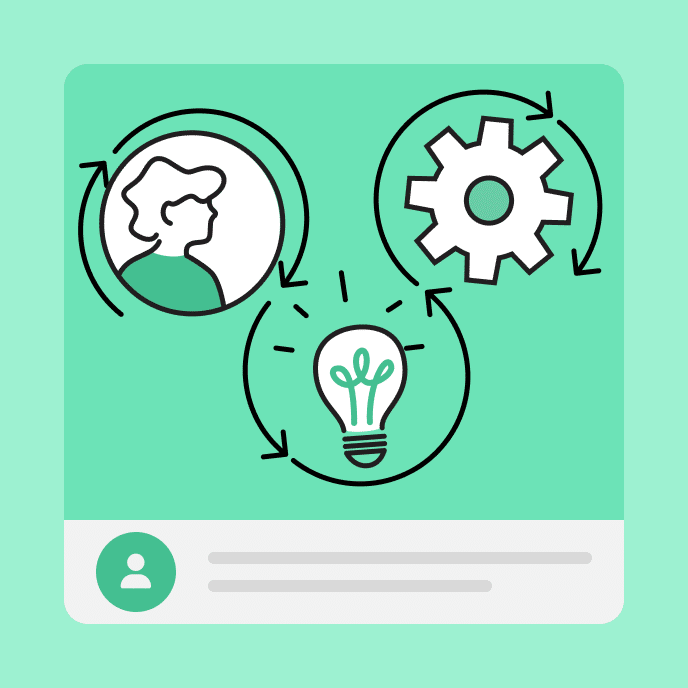How to Create Sales Training that Sticks
Create sales training that sticks with practical, bite-sized learning, reinforcement, and tracking. Keep reps engaged, improve retention, and drive results.

Reality check: Most sales training knowledge isn’t retained
Think back to the last sales training session you hosted for your team. Did your reps leave feeling fired up, ready to crush their sales targets and tackle any and all challenges headed their way? Now, fast forward a few weeks after the post-training high had worn off. How many of them continued to use those new skills, and how many fell back into old habits?
When it comes to the latter, probably more than you’d care to admit. Gartner research shows that sales reps typically forget 70 percent of what they learned in training within a week. That number shoots up to nearly 90 percent after a month. The reality is that far too many organizations are spending time, money, and resources on training that doesn’t stick, leaving sales professionals ill-equipped to meet the challenges that lay ahead.
So, what’s the secret to creating sales training that reps not only remember but actually put to use? In this blog post, we’ll explore how to give training a lasting impact on sales performance by focusing on real-world applications, breaking it into smaller chunks, and tracking progress to provide ongoing reinforcement.
Key Takeaways
- An effective sales training program is practical, relevant, and tied to the real-world scenarios reps face daily.
- Short, focused learning sessions fit into busy schedules and boost knowledge retention.
- Ongoing learning, knowledge checks, and progress tracking ensure reps build skills that last.
Focus on real-world applications
At one point or another, we’ve all been stuck in a mandatory all-day training session that has little to no relevance to our actual jobs. It’s a common problem in sales training. Too often, sales training programs focus on abstract theories or generic sales strategies and, as a result, they don’t zero in on the specific skills reps need to improve performance.
The bottom line is that if training doesn’t feel relevant, it won’t stick. That means your challenge when designing a curriculum is to connect training to your reps’ daily tasks and goals.
Make sales training practical
- Role-play real sales calls. Whether it’s cold calling, handling objections, or pitching new clients, create practice sessions where reps can test out skills and make improvements.
- Shadow senior reps. Turn your best performers into your best teachers. Give new reps opportunities to learn by watching experienced reps in action.
- Personalize it. Every sales rep is a unique individual with strengths and weaknesses. Tailor training to meet them where they are.
When sales reps can apply what they learn, they’re more likely to remember it and put it to use in the field.
Break training into manageable chunks
One-time training events that overwhelm learners with information simply aren’t conducive to real-world success. On any given day, sales reps are pulled in a thousand different directions, and having to switch gears with so many tasks leads to cognitive overload.
That’s why breaking training down into smaller, more manageable segments is the key to more effective sales training.
Why does shorter training work?
- It speeds up learning. Shorter training means reps get up to speed much faster.
- It leads to better retention. Reps retain more information when they learn new skills in shorter sessions over time.
- It fits the workflow. Reps can fit in training when they need it most, for instance, before a big pitch meeting, between sales calls, or during downtime.
Think small
- Keep lessons to 3-5 minutes. Whether it’s a quick-hit video, role-playing exercise, or coaching session, keep it brief and focused.
- Make it easily accessible. Opt for mobile-friendly formats that reps can access anytime, anywhere, whether on their mobile device, in your organization’s chat forum, or via your CRM.
- Mix it up. Use pop quizzes and self-assessments, interactive scenarios, or social media posts that feature insights from industry experts to reinforce concepts.
When training is short, accessible, and dynamic, it’s more likely to make a lasting impact.
Track progress and reinforce learning
One of the biggest challenges with sales training programs is how to evaluate their effectiveness. Too often, sales managers rely on satisfaction surveys or completion rates to determine whether the training was successful, but that doesn’t offer an accurate assessment. Instead, a good training curriculum will have built-in mechanisms to measure progress and offer suggestions for improvement.
Tips for measuring progress:
- Create strategic assessments. Quizzes, self-assessments, and branching scenarios throughout the sales training process offer insights into strengths and knowledge gaps.
- Use data for targeted feedback. Analytics and AI-powered insights can quickly identify what’s working and suggest targeted approaches for improvement.
- Evaluate in real-time. Many e-learning platforms can analyze sales conversations as they occur and provide instant feedback to help reps refine their techniques.
Make it stick with reinforcement
- Use refreshers. Sales reps need reminders for learning to stick. Repetition is key. You can accomplish this by summarizing the main takeaways at the end of each module or by revisiting previous points before building on them to create new knowledge.
- Space it out. Remember, training often works best when it mirrors the sales process. Deliver information at strategic touchpoints along the way, from lead prospecting and introductory meetings to pitches and deal negotiations.
- Offer it on-demand. Sales reps should be able to access training whenever they need it. Create a centralized training hub where they can find all of the necessary training materials, and make it mobile-friendly for easy access.
When you track progress effectively and use those insights to offer reinforcement, you ensure that the efforts and resources you put into the training program don’t go to waste.
Turn training into lasting success
Don’t settle for generic training methods that sales reps forget the moment they leave the room. Training isn’t about checking a box. It’s about nurturing growth, adaptability, and long-term success. That doesn’t happen in a single training session. It happens by making training that is manageable, authentic, and ongoing. When you create training that sticks, you’re setting your team up for lasting and meaningful success.
Learn more about sales training in our post, 6 Sales Training Topics to Upskill Your Sales Team.
You may also like

What is Sociocultural Theory?
Discover sociocultural theory, explore its core principles, and learn why Vygotsky’s methods became critical to learner success in the classroom and the workplace.


